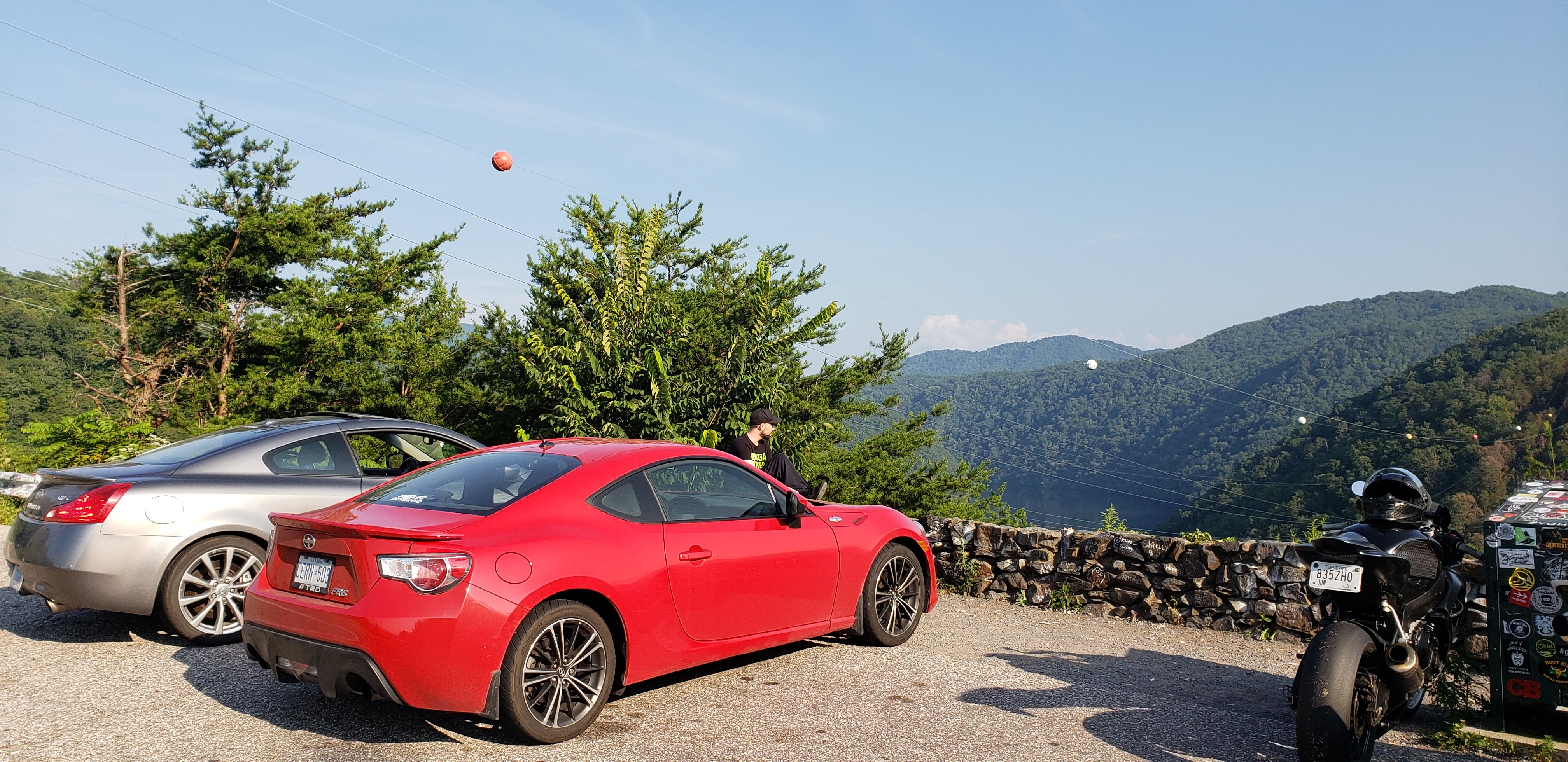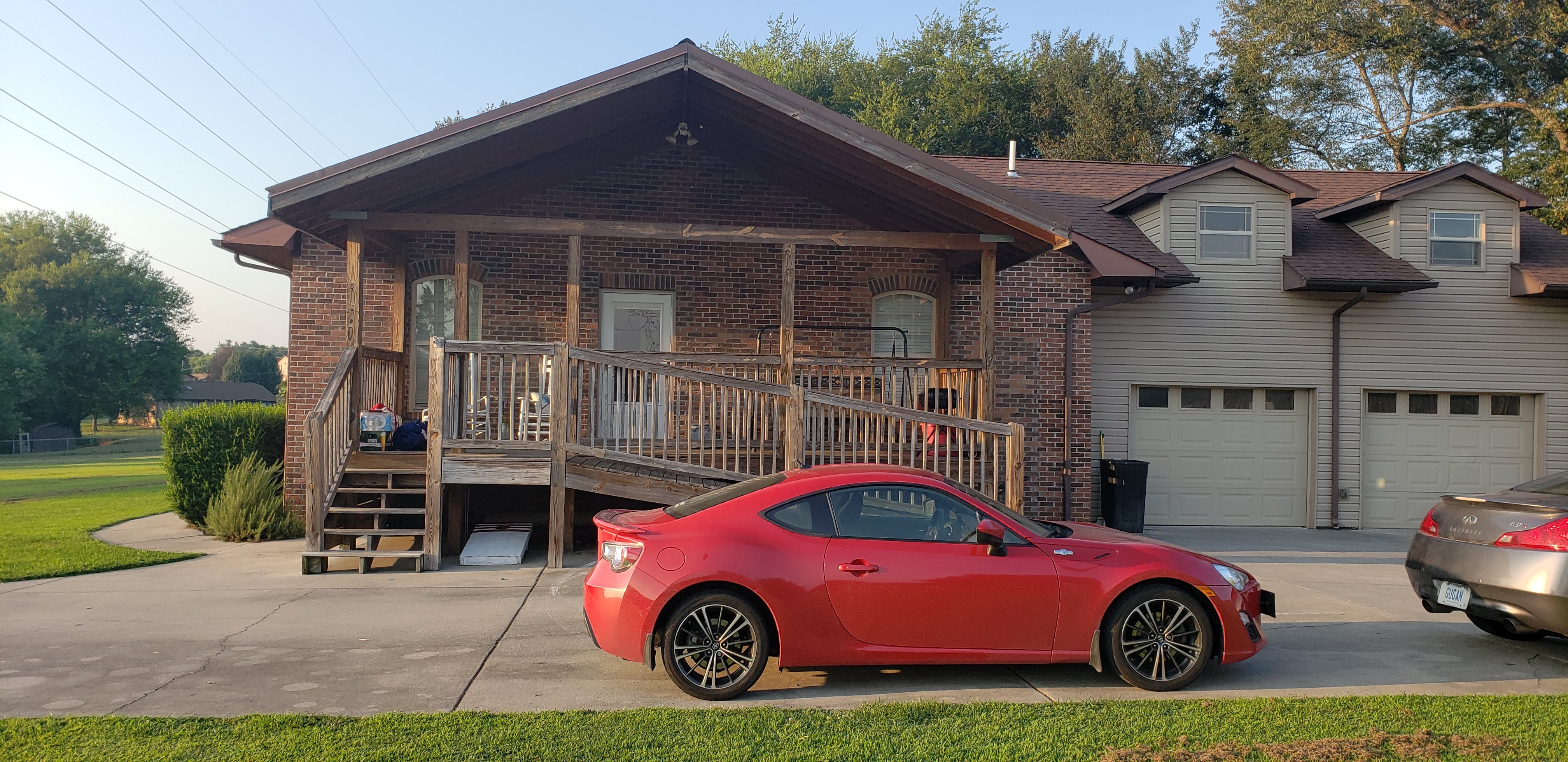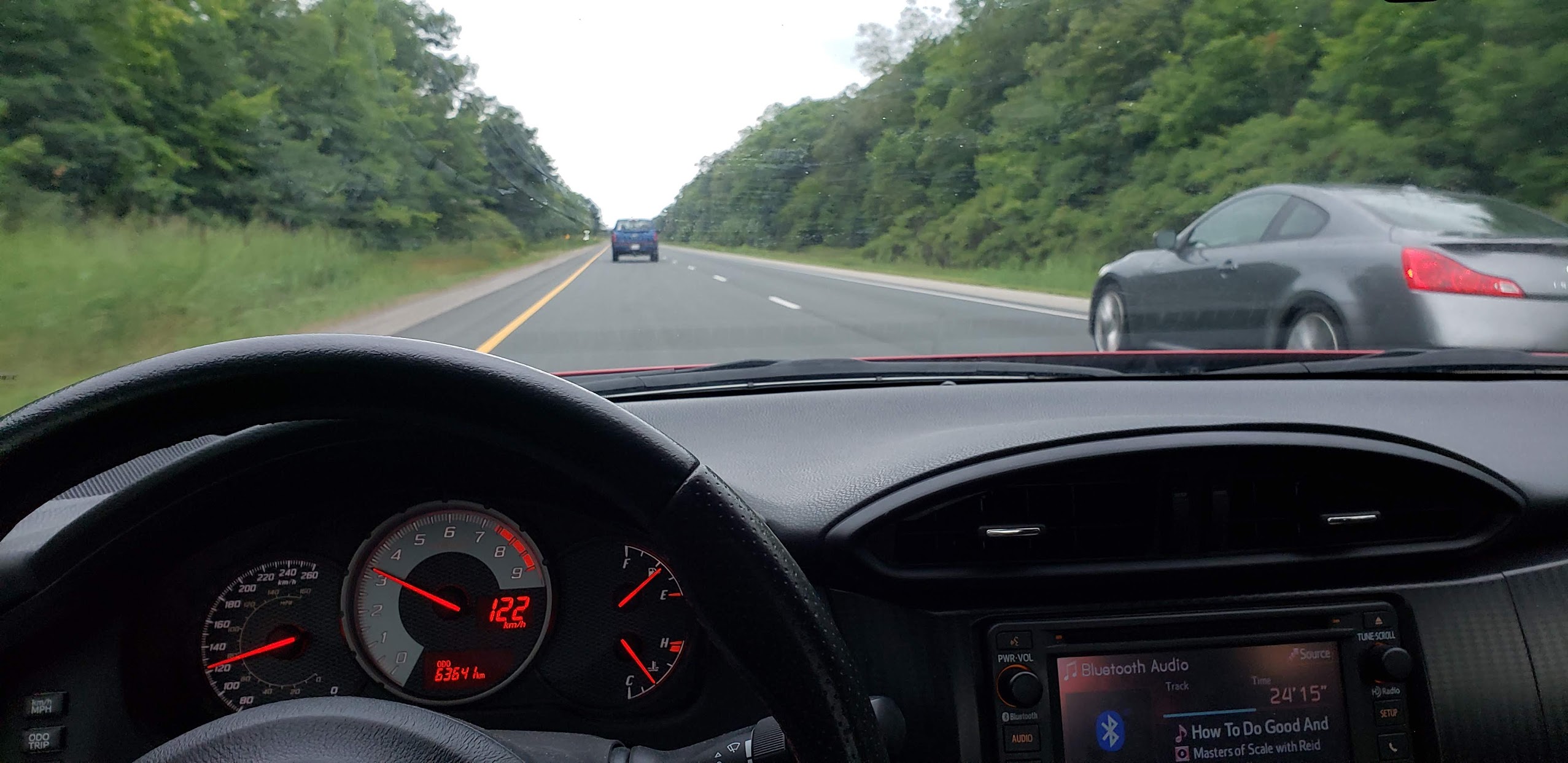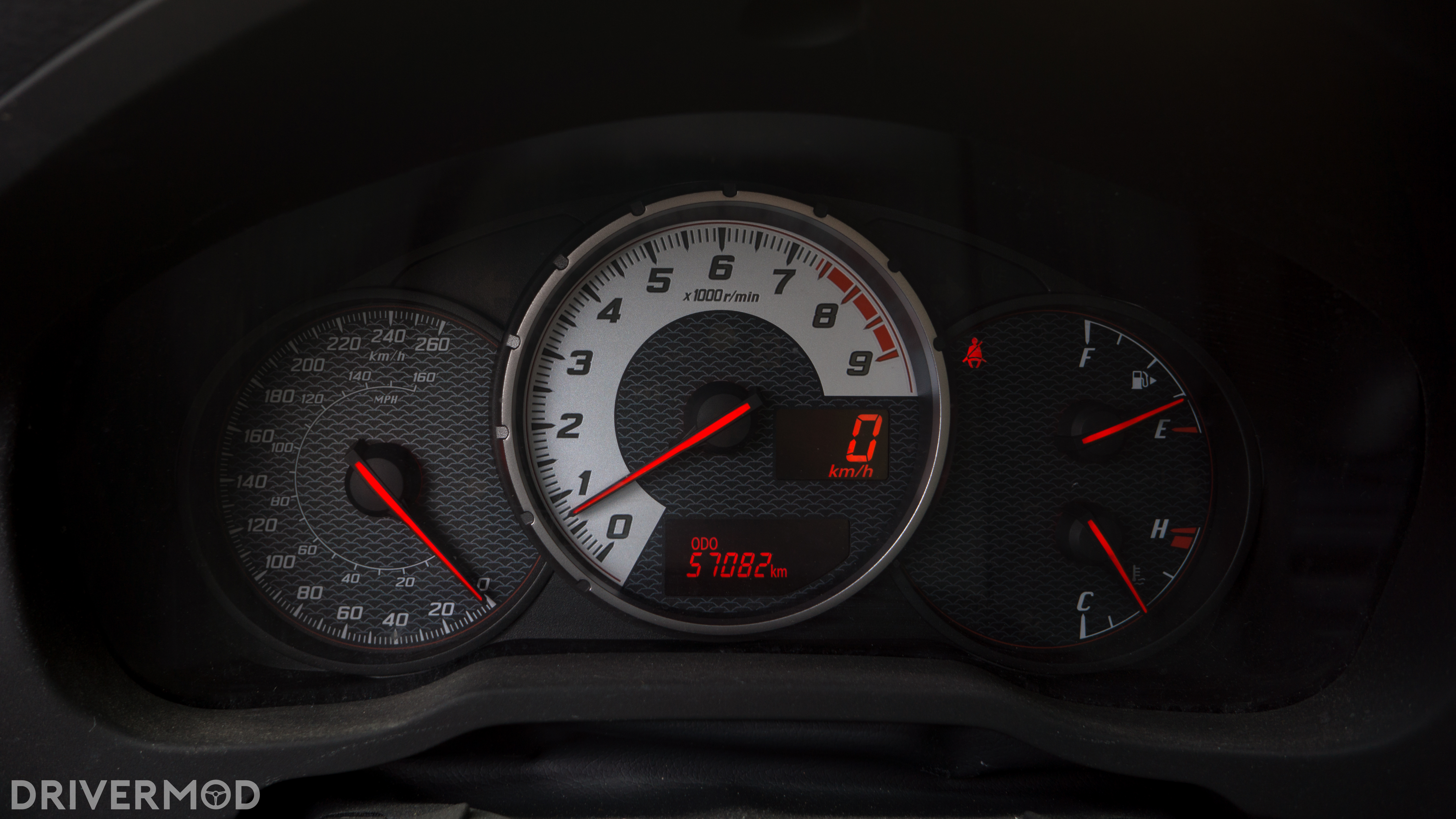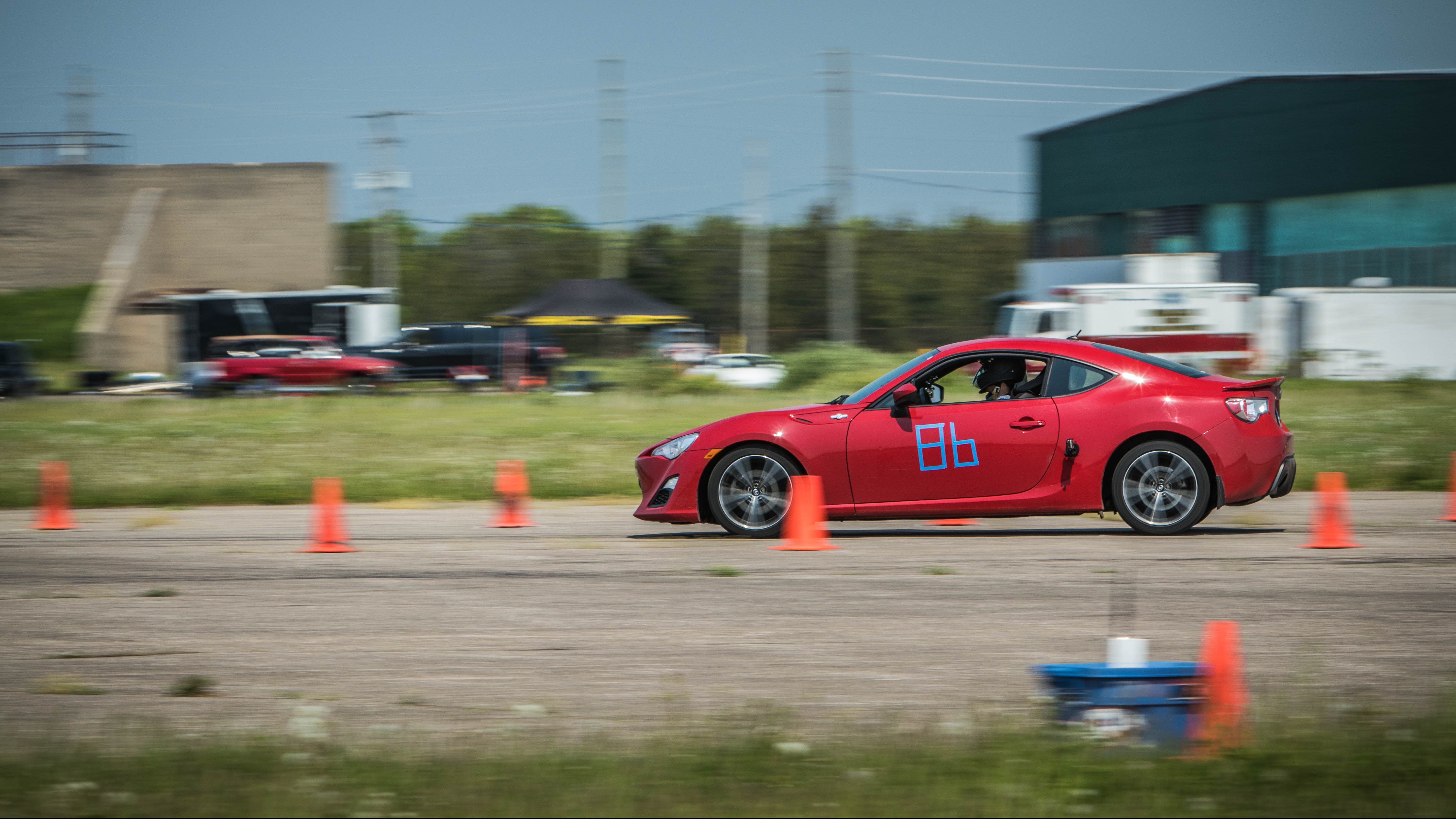Buying a lightly used Scion FRS last year was meant to be a turning point. I had a Civic that taught me that crashing is a terrible, very bad, no good thing to do in a car. Then I moved on to an NB Miata. Equipped with quality suspension parts, sticky tires and Japanese reliability, it was perfect. Then, I made the unquestionably stupid decision of attempting to swap a decade-old GM four-banger into it and spent the next two years limping from catastrophic failure to slightly less catastrophic failure while writing dozens of articles about it.
Now I have an adult job, with very adult RRSP contributions and paid time off. For the first time in my life, I feel like a proper adult, which means that my days of bump starting a hacked-up Japanese car by gently pushing it over the crest of a hill before jumping in and dumping the clutch – are over. That’s where my Firestorm-red Scion FRS comes in.
Living with the FRS
The FRS manages to simultaneously be a practical, reliable breath of fresh air, and comically childish. The rear seat folds completely flat allowing for easy hauling of everything from flat-packed Ikea furniture to multiple sets of tires, to full-sized luggage. And while carrying four passengers presents serious leg-room challenges, it’s doable for short trips. There’s never been a single instance where I needed to borrow another vehicle in order to get something done; which is incredibly refreshing after three-years of Miata ownership.
Then there are road trips. Coming from the perspective of owning a Miata with poly engine mounts, a straight-through exhaust and non-existent air-conditioning, I’ve found twelve-hour straight trips in the FRS to be a non-issue. In an attempt to be objective, I’ll point out the FRS’ firm, heavily bolstered seats, elevated levels of wind-noise and awful infotainment system, do make me wonder if I should have spent my money on a 1-Series. That said, it’s no worse than say, a Civic. In short, this is a reasonably uncompromised sports car.
But you might miss that if you fixate on the splashes of red and black throughout the interior, the massive white tachometer, and the weird space-invaders pattern you’ll find everywhere. Worst of all, is the fact that the FA20 sounds like a pissed off Honda engine. Driving a Scion FRS makes you look, and feel, like a perpetual teenager. And if looking like a responsible young professional (read: boring) is important to you, this isn’t the car for you.
Driving the FRS
There are roughly 400 think-pieces comparing the FRS to the Miata. That might be a mistake because these are very, very different sports cars. In the Miata, you sit way, way back – nearly over the rear wheels, contributing to the sensation that the car rotates just forward of your belt. It’s not dissimilar to other front-engined sports cars in that way – like Corvettes. More so, the Miata rolls from corner to corner; a result of soft suspension and a higher center of gravity. That’s not inherently a bad thing. It’s playful – like leaning a motorcycle. With its low weight and a double-wishbone setup, it works for the Miata.
The FRS in comparison feels closer to that of a true mid-engined car. It’s flat, sharp; a result of stiff suspension and the engine that sits lower than any inline four ever could. And you sit further forward so the car rotates aft of the driver. The result is driving an FRS at the limit feels closer to what you’d expect from an FD RX-7 or a Porsche Cayman. From that perspective, the sensations you experience are a bargain. I’ve never driven another car that’s so willing to rotate under throttle. You can hold it in a slide – play with it by modulating throttle and steering angle. Driving an FRS at the limit is a truly special experience, and for that reason alone, I think history is going to be kind to these cars.
Will it winter? Sure. There’s sufficient ground clearance, a 4-way Torsen differential, and surprisingly clever traction and stability control. You’ll get blown off the line by anything AWD, but I wouldn’t hesitate to drive an FRS all year round. That said, this is still a very tail-happy sports car, so I’d think twice before handing the keys to someone who hasn’t spent time doing performance driving.
Is it fast enough? Yes. The FRS is less like a VW GTI and more like a Honda S2000. Learn to downshift and keep your revs up and you’ll find yourself moving plenty quickly. Oh, and don’t buy it with an automatic transmission. Dreadfully long gearing makes these cars feel stupid slow.
Track Driving the FRS

The FRS is less of a turn-key track car than its marketing would have you believe. Drive a bone-stock FRS on track and you’ll boil your brake fluid, overheat your brake pads, and shred those god-awful Michelin Primacy tires in a single session.
Moreso, track driven FA20’s consistently report sky-high oil temperatures. A lack of an OEM oil cooler and thin factory 0w20 oil means that you’re asking for trouble if you abuse it without investing in a quality oil cooler and switching to 5w30. There’s also the fact that the FRS has zero camber adjustment, so you’ll want to invest in a set of camber bolts.
Almost everything needs some level of prep to survive on a racetrack, but these are things you should know if you’re planning on lapping your FRS.
Gripes
For reasons that I’ll question till the day I die, if you put ethanol into an FRS, it’s fuel-pump will squeak like a clapped out Honda (FRS owners call this ‘the crickets’). And as far as I can tell, there’s no permanent solution that doesn’t involve an expensive aftermarket fuel pump and custom tuning. For that reason, I’ve spent the past year hunting ethanol free 91-octane religiously. Which is annoying as hell.
Aside from that, the UI designer behind its infotainment system needs to be fired immediately, its analog speedometer is laughably useless, all of its cup holders are in terrible positions (what the hell is with these cars and their lack of a center armrest?), and its paint is so thin I swear I see new rock chips every day. It’s also worth mentioning that the clutch in these cars isn’t great. The engagement point is small and at the very top of its arch, and there’s very little feel. I taught my girlfriend to drive manual in the FRS and it was at least twice as painful as it should have been.
Conclusion
The FRS was supposed to be a stepping stone – something to hold me off until I can afford an S550 Mustang GT or similar, but it’s seeming more and more likely that I’ll be holding onto this car for quite some time. It manages everything a twenty-something without kids could possibly need to do, while simultaneously managing to be one of the most enjoyable cars I’ve ever driven.
If that sounds like your cup of tea and you can live with a car that makes you look like a perpetual teenager, you’re in luck; these cars are getting properly cheap.
